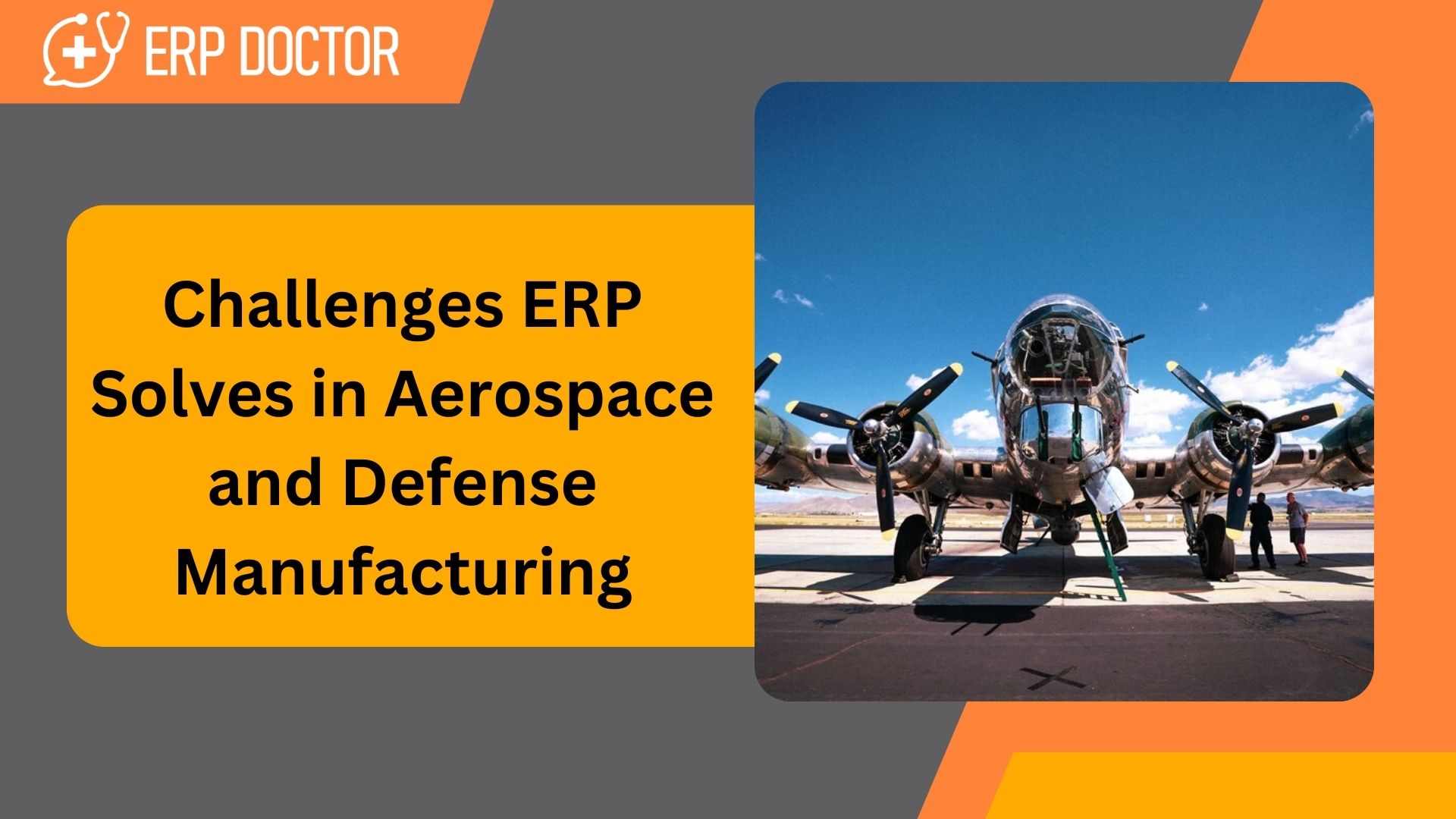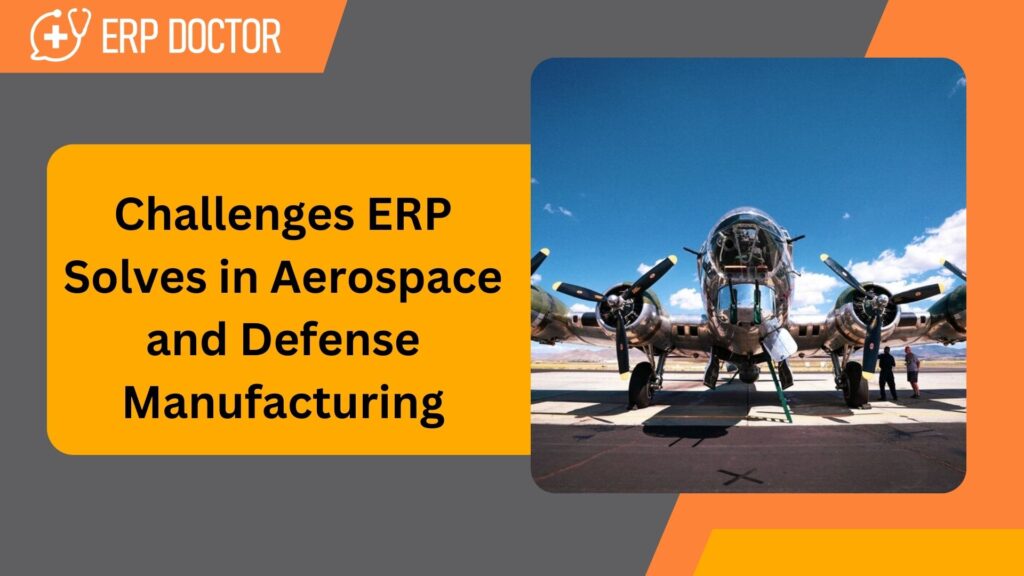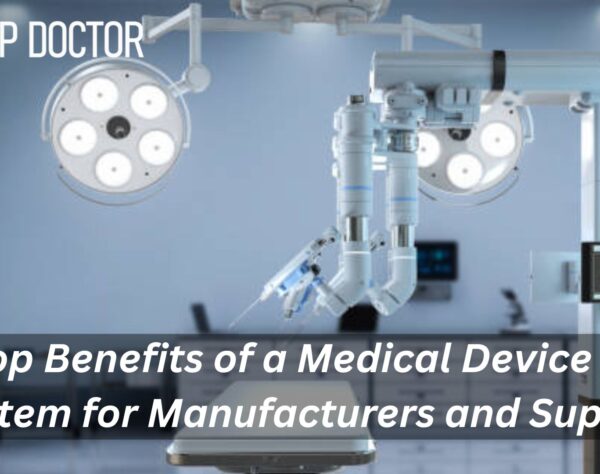
Challenges ERP Solves in Aerospace and Defense Manufacturing

How ERP Solutions Transform Aerospace and Defense Manufacturing
The aerospace and defense manufacturing industry faces numerous challenges due to its complex operations, stringent regulatory requirements, and the need for continuous innovation. Enterprise Resource Planning (ERP) systems have emerged as a game-changer in addressing these challenges by integrating various business functions and providing real-time data insights. In this blog, we explore the eight key challenges ERP solutions effectively solve in aerospace and defense manufacturing.
Table of Contents
Challenge 1: Complex Supply Chain Management
Aerospace manufacturing involves a highly intricate supply chain with numerous suppliers, subcontractors, and global stakeholders. Managing this complexity manually can lead to inefficiencies, delays, and cost overruns.
How ERP Helps:
- Provides end-to-end visibility of the supply chain.
- Facilitates demand forecasting and procurement planning.
- Enhances supplier collaboration through integrated communication tools.
- Automates tracking of raw materials and components.
Challenge 2: Regulatory Compliance and Quality Control
Compliance with stringent regulations such as AS9100, ITAR, and FAA standards is mandatory in the aerospace and defense sector. Failure to meet these standards can result in hefty fines and reputational damage.
How ERP Helps:
- Ensures adherence to industry regulations with automated compliance checks.
- Maintains detailed records for audits and inspections.
- Tracks product quality at every stage of the production process.
- Offers real-time alerts for non-compliance issues.
Challenge 3: Cost Control and Budget Management
With high production costs and long lead times, cost control remains a major challenge for aerospace manufacturers.
How ERP Helps:
- Provides accurate cost tracking and budget forecasting.
- Identifies cost-saving opportunities through data analytics.
- Optimizes resource allocation and reduces waste.
- Enhances financial planning and reporting.
Challenge 4: Inventory and Material Management
Inventory mismanagement can lead to production delays and increased carrying costs, impacting overall efficiency.
How ERP Helps:
- Provides real-time inventory tracking and control.
- Automates reorder points to prevent stockouts.
- Reduces excess inventory through demand-driven planning.
- Improves warehouse management with barcode scanning and tracking.
Challenge 5: Product Lifecycle Management (PLM)
Managing the lifecycle of complex aerospace products from design to decommissioning requires robust processes and documentation.
How ERP Helps:
- Integrates PLM functionalities for seamless collaboration.
- Tracks changes and updates in design and manufacturing processes.
- Ensures traceability of components and subassemblies.
- Enhances collaboration between engineering and production teams.
Challenge 6: Data Security and Cyber Threats
The aerospace and defense sector is a prime target for cyber threats, making data security a top priority.
How ERP Helps:
- Provides multi-layered security features, including role-based access.
- Encrypts sensitive data to prevent unauthorized access.
- Enables secure cloud-based access with regular backups.
- Monitors system activity for potential threats and vulnerabilities.
Challenge 7: Maintenance, Repair, and Overhaul (MRO)
Ensuring timely maintenance and reducing downtime are critical for aerospace companies to maintain operational efficiency.
How ERP Helps:
- Schedules preventive maintenance to minimize unexpected failures.
- Tracks asset performance and generates maintenance reports.
- Reduces downtime by ensuring spare parts availability.
- Improves compliance with maintenance regulations.
Challenge 8: Workforce and Resource Optimization
Efficient workforce management is crucial for meeting production deadlines and maintaining quality standards.
How ERP Helps:
- Optimizes workforce scheduling and labor allocation.
- Provides training and certification tracking.
- Enhances communication and collaboration among teams.
- Tracks employee productivity and performance metrics.
ERP: The Future of Aerospace and Defense Manufacturing
Implementing an ERP system in the aerospace and defense manufacturing sector can significantly enhance operational efficiency, ensure compliance, and drive cost savings. By addressing these critical challenges, aerospace companies can achieve improved productivity, better decision-making, and a competitive edge in the market.
FAQ
1. What are the key ERP features required for aerospace and defense manufacturing?
An ERP for aerospace should include supply chain management, compliance tracking, cost control, PLM integration, and MRO capabilities.
2. How does ERP improve compliance in aerospace manufacturing?
ERP automates compliance checks, maintains records for audits, and provides real-time alerts for non-compliance issues.
3. Can small aerospace companies benefit from ERP systems?
Yes, modern cloud-based ERP solutions offer scalable features tailored to the needs of small and mid-sized aerospace companies.
4. How does ERP enhance cybersecurity in the aerospace industry?
ERP systems offer data encryption, role-based access controls, and regular security updates to protect sensitive information.
5. How long does it take to implement an ERP in aerospace manufacturing?
The implementation timeline varies based on the complexity of operations but typically takes 6 to 18 months.
By implementing the right ERP solution, aerospace manufacturers can overcome these challenges and achieve operational excellence.
If your packaging business is ready to take the leap, explore ERP solutions tailored to your needs today!







